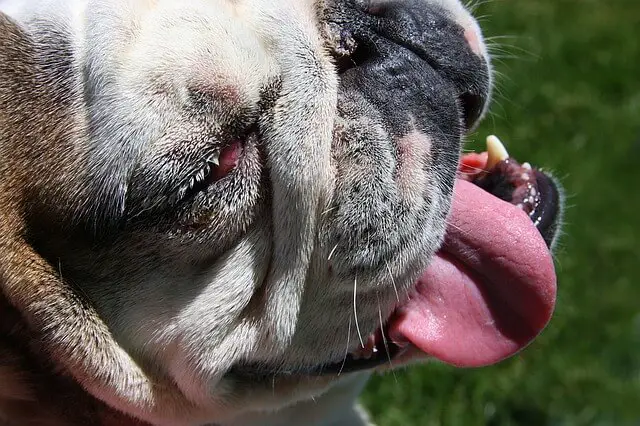Cherry Eye in Dogs
07.08.2020.
Maybe there was a situation where you noticed a dog with a bright red and swollen-looking eye. That is commonly referred to as Cherry Eye in dogs. Because dogs possess the third eyelid, this state occurs when the tear gland becomes inflamed in that third eyelid. This third eyelid works as additional protection for the eyes, especially during hunting, fighting, etc. Cherry eyes in dogs are usually not painful, but the eye can be itchy to the dog. If this disorder is left untreated, that can lead to many other complications, including dry eye syndrome.
Cherry Eye in dogs – symptoms
The most common symptoms are swelling, redness, dry eye, blepharospasm (excessive squinting). Although the eye will not look nice, in most cases, the dog will not feel any pain. This can occur in one or both eyes. Many dogs that develop a cherry eye in one eye will eventually develop it in the opposite eye.
TIP: If you notice that your dog is rubbing his face on the floor or that he's pawing at his eyes, that should be a sign that you should see a veterinarian.
This disorder is not preventable. This happens because of the weakness in the eyelid tissue that will, in normal cases, hold the gland in place.
Causes
It is mostly unknown what causes this state. This is a congenital disorder that passes on from generation to generation. Also, there are dog breeds that may be more prone to developing a cherry eye.
Dog breeds
Cherry eye can occur to any dog at any age, but some dog breeds are more prone to developing the cherry eye. Usually, dogs with shorter muzzles have a high risk, including a Beagle, Pug, Shar-pei, Shih Tzu, Bulldog, etc.

Cherry Eye in dogs - treatment
If you notice that your dog has a cherry eye, make an appointment with your vet right away. The faster you react, the better it is for the dogs' long-term eye health. The vet will, in some cases, recommend eye drops to reduce the swelling, and he may also prescribe your dog antibiotic eye medicine. If that doesn't help, the next step is surgery, including replacing the gland in the proper position.
After surgery
You must follow all the suggestions your vet will give you. Postoperative swelling is expected, and that should stop in about a week. It is not uncommon for the cherry eye to reappear. To avoid any complications, make sure that you are doing everything your vet instructed you.
World Dog Finder team







Share